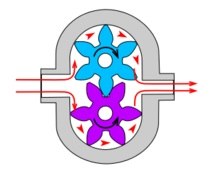Power By Combining d & a Above
Power


Power By Combining d & a Above
Power

Electrical Units Explained
Disclaimer
Whilst some care has been taken to check externally linked websites no responsibility is offered nor implied for the suitability, legality or reliability of content therein.
Reason For This Page
I’ve lost count of the number of times people have asked me to explain electrical measurements. Sadly I’ve also lost count of the number of websites or videos that I’ve seen that have misused electrical units, missed out fundamentals or even wrongly explained a term. I don’t profess to have exclusive understanding but so far I’ve not found any website that really gets to grip with what’s what. If you have found one please let me know (email address on Home page).
We use electricity to do work for us. That work can be physical or it’s presence in some form can signal some piece of information -the internet for instance ! I’m going to run through the basic terms in an easy way and finish on a practical worked example that you might find on your car for instance. In all subjects language is important so firstly we have to agree on units.
Internationally Agreed Units
Until 1960 the use of units around the world varied greatly. You may have heard of the bushel, or dram, or even a Sievert ! Conversion factors were used all the time eg feet into centimeters. However two countries couldn’t even agree to that eg the English pint has 20 fluid ounces and the American only 16 ! Something had to change.
Since 11th October 1960 all fundamental physical units were agreed internationally by a conference in France (it was the 11th such meeting since its inauguration in 1875).
Not so well understood is that there are only 7 basic units from which all other measurements are derived. The ones we’re interested in here are the meter, the second and the Newton. The first two are well known; the latter is the unit of force (the old unit was pound-force or lbf). Please don’t confuse this with pressure (which is force per unit area).
Units Of: Work Done
Electricity is a tool to do work yet I just cannot understand why this four-letter-word is missed out from every website I’ve seen so far -yet it’s why we use electricity: to do work for us.


Rates Of Doing That Work
Try not to confuse work done with the rate of doing that work. If you had to move 100 hundred bricks you could rush the job or do it slowly: the same amount of work would have to be done. Old fashioned rates of working working were the Horse Power. Nowadays we all use the Watt (One HP is approximately 720 Watts).
We are all very familiar with rates of working. Fast trains get you from A to B rapidly - but you still only got from A to B ! Although the train might have got a little hotter doing it that quick !
The agreed unit is the Joule. It is named after James Joule who hailed from Salford and was a Mathematician, Physicist and (importantly for me) a Brewer ! He laid down the Law Of The Conservation Of Energy which states that it can neither be created nor destroyed merely converted and usually ends up as heat (this has the exceptions of nuclear reactions and Einstein’s famous conclusion of course). He also worked with Lord Kelvin to develop the absolute temperature scale (due to collisions of atoms - whose existence was not generally accepted for another 50 years !) and the connection between electrical flow and heat (more of this later).

1. Units Of Work
The Analogy Of Water Compared To Electricity
If you have ever looked for an explanation of electricity you will have come across the the idea that it can be compared to water flowing from a lake in a river. The higher the lake the more push given to the water. A narrow river only allows a small amount of water to flow yet if it is wide a lot can. If there are reeds in the river they will resist the flow.
To be honest it might be better to compare electricity to hydraulic fluid circulating on a caterpillar tracked bulldozer. The main pump is like the battery and the hydraulic track motors could be compared to a direct current electric motors. Hydraulic pipes could be considered analogous to wires. The operator has levers that control how much fluid goes to the left and right tracks. After it has done it’s work it is returned to a sump ready to be pumped round the hydraulic circuit again.
In the diagram to the right the fluid flows from left to right. If it is reversed the hydraulic motor will reverse. Whilst this is true of a DC electric motor it is not true of an AC motor but that is out of scope for now..
2. Water Analogy

Hydraulic Motor
Work Done & Overload
Small bulldozers only need a small pump, small pipes and small motors. If a large bulldozer was constructed it would need large motors. However if only a small pump and pipes were used then they would constrain the hydraulic fluid. To get more through one might increase the pressure by using a more powerful pump. However those poor narrow pipes might struggle or even burst.
So it is with wires. Obviously we all know that too much electricity flowing through a thin, therefore significantly resistive wire, will make it hot and burn it out. Likewise the analogy breaks down here because those little electrons don’t come pouring out like fluid but bump into the atoms in the conductor and make it hot.
Worked Example For The Flow Of 1 Ampere
Electrons are exceedingly small so say we have 1023 of them (see * below right) bumping along their little way. Let’s calculate how fast they are moving in 1m of wire.
The definition of the Ampere is this:
If all of them move one meter in one second how many Coulombs of charge would be moved:
But we only want to find out about 1 Coulomb so they will all move at 1/10,000 of that. Only 0.1mm/sec - golly that’s slow !
Conclusion So Far
It’s best not to be pedantic about what is moving, how and even more idiosyncratically, in which direction. By all means say to others that electrons are flowing round the circuit and wave your arm meaningfully in the air but if you get corrected do admit that you actually know more than you are first letting on about. And no way does an article like this need to explain the even weirder truth that my hero James Clark Maxwell used to even further mangle what should be a simple explanation of electricity here. He did it gorgeously beautifully but I’m not going to even go there -that’s for you to look up another time, bless him.
Thus, from now on, we will explore work being done by movement of charge but not how. Now for the important stuff: go get yourself a cup of tea - you’ve earned it !
Definition
1 Ampere = 1 Coulomb per second.
A Large Number Of Electrons Move -say 1 mole*
6 x 1023 electrons x 1.6 x 10-19 Coulombs/electron = 10,000 Coulombs
Movement Of One Coulomb
1/10,000 meters per second = 0.1mm per second
Oops Negative !
Can I just point out that by convention electrons are negative (See †margin note). Oh golly that means that the little blighters are traveling backwards to give us a forward flow of charge (so the seawater analogy isn’t so stupid). Yep this is too confusing to keep at the forefront of one’s thinking so let’s forget this and keep it simple but I have to tell the truth.
5. Work Done By The Movement Of Charge - Worked Example
How Are Work And Charge Related ?
All of this movement of charge is to do some form of work. Three hundred years ago our friend Mr James Watt so machines to do work. He boasted that his steam engines could do more work than those of his competitors. However his clients were stingy and didn’t like to have to buy more coal than was necessary so James had to improve their rate of working and get them to consume less coal ! He considered friction in his drive bearings. Were the seals on his mining pumps too tight slowing the engine down ? He had to measure things to find out where the mechanical wastage was.

So it is with electrical systems. How do we measure where electrical wastage is ? His bearings got hot. Electrical components get hot but not always when we want them to.
Resistance Worked Example
Let’s repeat a problem like James may have had but with an electrical system. All manufacturers wire car batteries to light headlights through a switch (we’ll assume that’s a perfect switch which has no resistance when on). When you buy the car the headlights are bright.
However after just one year your headlights are noticeably dimmer than they once were. What’s wrong ? You measure the battery - all is good. You measure the headlight all is not good but not terrible. Yet the headlight is really dim. Disproportionately dim.
Why Are the headlights very dim for a slight loss of voltage ?
Obviously The Problem Is Caused By A Constriction
If we want to keep the filament hot enough to be at full brightness then plenty of charge must be pushed around the circuit. Let’s say that this calls for 4 Coulombs per second to do this ie 4A. Let’s work out how big the constriction is..
Nowadays all manufacturers sell cars and motorcycles that operate at 12v (trucks generally operate at 24v and small motorcycles used to run at 6v but no longer). Back in the day a very helpful gentleman by the name of Georg Ohm calculated how different materials resist the push of charge by a battery. He discovered that it was a linear law: the ratio of one to the other (see Ohm’s Law to the right).
Therefore, when illuminated: Headlight Resistance = 12V / 4A = 3 Ohms.
Headlight Normal Brightness
4 Coulombs per second = 4 Ampères.
2. Power Of The Dim Headlight
Let’s learn a bit more about our dim headlight. By measurement you have found out that there’s only 10V on the headlight. In order to calculate how much power it is dissipating using this equation you need to know how much current is flowing to it but that would mean cutting the wire to it to put an Ammeter in series with it. That’s not good (and James Watt’s customers wouldn’t like him cutting their steam pipes either). However there’s another way: we can use Equation g (far right) to find this out..
3. Power From The Current To The Headlight
By the way it is possible to calculate the power dissipated by the headlight by measuring the current only in a circuit ie by taking the fuse out in the fuse box and putting an ammeter across where the fuse would go. If you can’t get to the connections on the back of the headlight because they are surrounded by sealed waterproof cover then this is the way to go. In this instance I measured 3.31A and used Equation h (far right). Oh look: the result you get is the same - that’s handy !
2a. Dim Headlight
Power = Voltage² / Resistance
= 10² / 3 = 33W
1. Power Of The Bright Headlight
We now have enough information to calculate how much power the bright headlight requires to run at full brightness:
1. Perfect Headlight
Power = 12V x 4A = 48Watts
2b. Dim Headlight
Power = Current² x Resistance
= 3.31A² x 3 = 33W
Initially yes, I would be surprised by this result because I lose 2V in a bad connection yet lose nearly a 1/3 of my power (33W as opposed to 48W is 31% - see right). Surely this isn’t fair ?
What On Earth’s Going On ?
You’ve seen the figures - there’s no trick. It really does happen. It’s because power is calculated by a ‘power law’ ie squared so I shouldn’t be surprised by these figures after all !
Let’s check -see right. Oh no that nasty bit of corrosion gets warm by 6.6W.
We all know that energy can neither be created nor destroyed so where’s it gone ?
Yes 33W + 6.6W ≠ 48W so how can that be ?
Well the resistance of the whole circuit has actually gone up. It’s now 3.6 Ohms thus the power of the whole poor circuit is given by this...
And agrees with our calculation of the power of the dim headlight + the warmth of the poor joint.
If you’ve followed that you’re now ‘getting’ electricity. Well done. Have another cuppa !
Should We Be Surprised To See This Dramatic Loss In Power ?
Volt Loss
2V / 12V = 16%
Power Loss
15W / 48W = 31%
Resistance At Corroded Poor Joint
R = 2V / 3.31A = 0.6 Ohms
Power Lost At Corroded Poor Joint
P = 2V x 3.31A = 6.6W
Power Of Whole Poor Circuit
P = 12V² / 3.6 ohms = 40 Watts
You’ve Done Well
I hope that this little discussion has been useful to you by way of a real world example (and a warning to keep those automotive screws tight !). Let me know if you have any criticisms or praise ? You may also be thinking that electrical stuff is too difficult. Please don’t worry the penny will drop if you follow the links above. If not please contact me at the address on the Home page.
Power Bricks
Lastly let me just introduce you to another practical example to help you think about power laws. If I was to drop a brick from a certain height it will dent the ground by so much. If we drop it from twice the height will it make a hole in the ground (or in my toe) twice as big ? Nope, sadly it will be four times ! This is because gravity is a square law. The speed of the brick will be four times the amount.
Even worse !
Even worse the energy in the brick, when it hits whatever soft part, is given by the mechanical equation E= 1/2 mass x velocity² so it will be 16 times more painful. I think that’s another Blimey !
(only a Blimey mind..)
3. When Current Flows The Charge Moves Fast - But Not The Electrons !
The smallest indivisible amount of charge is 1.6 x 10-19 Coulombs. This is the charge found on only one electron (or a proton). It would be so nice to stick with convention and say that the electrons themselves are moving around the circuit. As we’ve seen the reality is a bit more boring -they bump. As I said it’s the charge moving from one place to another that defines our current flow - not the ‘trucks’ moving it.
6. Three Ways To Calculate Electrical Power
Work Your Feet Off
Previous units of work in steam days were:
Foot-pounds (lbf)
British Thermal Units (BTUs)
(the amount of energy needed to raise 1 lb of water by one 1ºF)
An attempt was made to metricate:
Calories and Ergs
(the energy needed to raise one gram of water by one degree Celcius)
Something Is Instantaneous
When you throw a switch your kitchen light comes on almost instantaneously (see *right). I’ve seen it said that the electrons whizz round at this speed. Actually they don’t. Sorry. Have you ever looked at the waves on the sea. They come from miles out and crash on the sea shore. However a stick or gull on top of the water merely bobs up and down and so does the water below them. We are familiar with why: large amounts of wind energy cause ripples far out at sea. The sea level remains the same but the energy of the bobbing causes small stones to move and grind each other down to grains of sand -this even happens to granite ! Yet the water didn’t move in that direction. In fact the tide may have been moving out yet the waves crash in. Initially counter-intuitive we accept this.

4. How Fast Do Electrons Move ?
Electricity will move through a conductor in any direction that it is pushed. On a tiny scale each electron bumps into the next and shoves its neighbour. Just like the molecules of sea water it hardly moves, and its neighbour hardly does, but those tiny knocks add up until finally the little blighters at the far end are bounced. At that scale they strongly repel each other so behave like the balls in a Newtons Cradle (above right). The application of a pushing force, a voltage, does cause the electrons to drift slightly but billions of them at a time. Brain Slam explains this motion perfectly - click the picture on the right for a 4m50 video..
7. You’re Now An Expert..
Extra Question
Here’s a little something to do while you sup your tea: Consider what the effect on the headlamp brightness will be if the car manufacturer saves money by using cheap wire that, whilst it doesn’t burn out, does present a 1 Ohm of resistance in the total circuit. What percentage of full brightness would the headlamp be ?
Notes On The Margins
Under Pressure
A Newton force just happens to be a very small unit. Spread over one square meter this is a tiny pressure:
For instance atmospheric pressure is
14psi or 30” of mercury or 32ft of water
= ~100,000 Pascals (N/m²)
Tea - Best of The Day
A kettle might convert 2000W of electricity to heat. It’s one of the few things that is nearly 100% efficient (nearly because a microscopic amount of energy is converted to sound as the kettle groans !)
The Speed Of Your Light
The bouncing of electrons is very efficient. Even though they move microscopic amounts their so called wavefront, nudging each other, travels near the speed of light - nearly. Due to two effects it is somewhere between 50-95% of c. For the majority of two wire, direct current, circuits it is about 2/3 of c.
How Big Is Small ?
Our bodies contain ~40 tillion cells. Cells contain billions of atoms. An atom is roughly one millionth the diameter of a human hair
ie 0.1nm = 10‒¹⁰m
An electron is about 1/1600th of the diameter of a small atom.
Whilst a virus, like the dreaded Covid, contains billions of atoms it cannot be seen with an optical microscope. Trained researchers have to scan it with a beam of electrons to gain information that a computer can then use to make a 3D visualisation. Colours of light mean nothing at this scale so any pictures you see are a choice of the rendering operator.
* The Chemist’s Number
I am assuming that the wire weighs 32g. Chemists tell us that copper has an atomic number of 64 and two valency electrons. I therefore assume that there will be ~ 1 mole of electrons ie one Avagadro’s Number of them ie 6 x 1023 electrons.
A Good Way To Think Of What’s Going On Is Shipping Containers.
Charge is measured in Coulombs and in metals and carbon it’s carried in unified containers -our very efficient little delivery drivers: the electrons.
Being unified their trucks carry:
1.6 x 10-19 Coulombs.
Surprisingly we see all charge put into lumps of this size. When you see the word quantisation you’ll know now how much !
Sensible Symbols
The symbol for current is I not C. This is because the symbol for units of charge, Coulombs, obviously uses the letter C.
† The Historical Reason For Electrons Being Considered Negative
Our dear American cousins often imply that they invented most things eg the first working planes - I’d like to give the French credit for them. They make various claims about Ben Franklin and electricity. However the truth obviously is much earlier and more convoluted than that. See this short reminder page:

Ohms Law
This can be written in three ways:
Voltage = Current x Resistance (a)
Current = Voltage / Resistance (b)
Resistance = Voltage / Current (c)
This can be summarised in the following triangle.
Click on it to see how it is used.
Power From Current x Voltage
This can also be written in three ways:
Power = Current x Voltage (d)
Current = Power / Voltage (e)
Voltage = Power / Current (f)
This can be summarised in the following triangle.
Click on it to see how it is used.

Difference Between Voltage and Current
If you’re still unsure about the difference between Voltage and Current click on this graphic for more very visual help..
Quick Link
If you are raring to go and understand much of what’s below I have been contacted by Elliot Lynwood and he suggests this rather useful link site for young people: All About Electronic Circuits For Kids

What Is Moving In An Electric Circuit ?
Of course the hydraulic fluid movement may be measured in litres per second but what is ‘moving’ in an electric circuit ? It’s electric charge (measured in Coulombs with symbol Q). The movement of electric charge is called Current (measured in Amperes with symbol I -not C see right); the force with which that current is applied to make that charge move is called a Voltage (measured in volts with symbol V); and logically the resistance of a material to that movement is called the Resistance (measured in ohms with symbol R).
I’m afraid I’m going to have to explode some myths here but it doesn’t change the way that one uses electricity nor how it’s conventionally explained. However it does mean that once you know this you may be frustrated when looking at misunderstandings of charge movement. If you’re not interested then please skip the next two sections and move onto Section 5.
= Voltage x Current
= Voltage x (Voltage / Resistance)
= Voltage² / Resistance (g)
Power By Combining d & b Above
Power
= Voltage x Current
= (Current x Resistance) x Current
= Current² x Resistance (h)
It’s always wise to check that our results are reasonable. If we divide these results by 720 we see that this is ~1/15th of a horsepower. As a small car is about 50 HP it’s reasonable that putting the headlights on won’t slow the car down very much !

